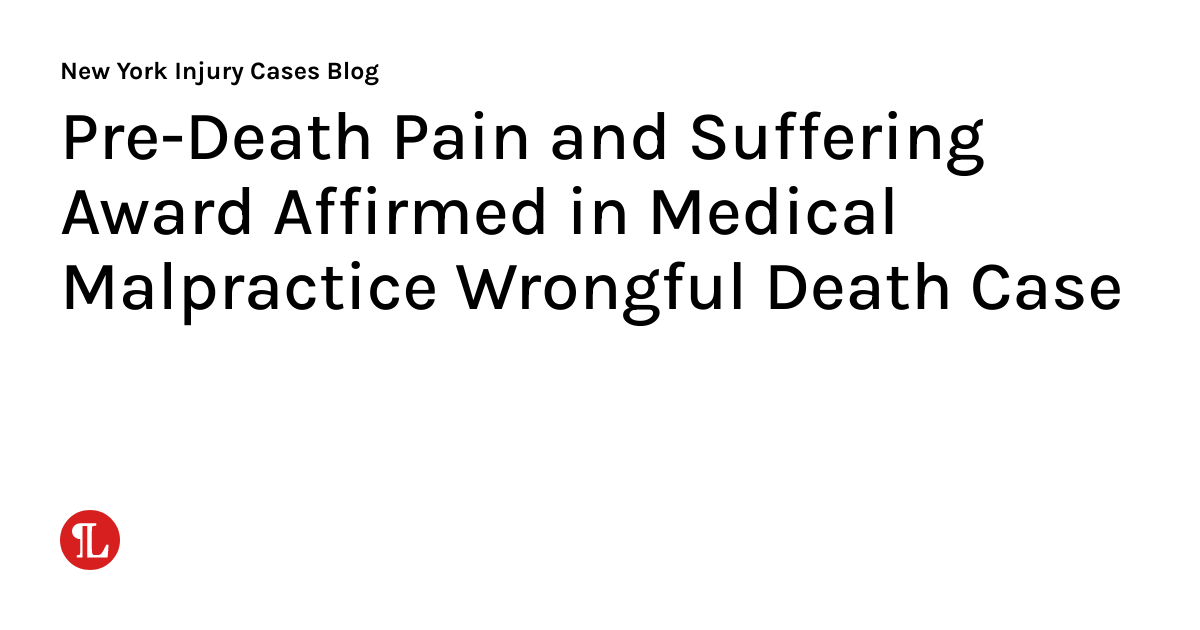On September 2, 2012, Joseph Stewart was admitted to New York Hospital Queens complaining of persistent headaches. Blood tests revealed abnormally high leukocytes indicating an infection. Ten days later he was transferred to a rehabilitation facility but had to be returned to the hospital after his leukocyte level kept climbing and he was exhibiting unusual confusion.
Mr. Stewart, a 73 year old retiree, died at the hospital 28 days after his initial admission. The cause of death was acute bacterial meningitis and a mycotic aneurysm.
In the ensuing medical malpractice lawsuit against the hospital, the jury found that Mr. Stewart should not have been discharged on September 12th without having accurately diagnosed his condition and that this was a substantial factor in causing his death. The jury then awarded pre-death conscious pain and suffering damages in the sum of $1,300,000 (28 days).
In Stewart v. New York Hospital Queens, (2d Dept. 2023), both the liability and damages verdicts have been affirmed.
The decedent’s wife and son, who visited with him every day, testified that he was often holding his head and moaning while complaining of and suffering from near constant head pain. The pain was not relieved by medications and it got worse and worse as the month wore on.
The defense argued that the hospital records indicated that decedent’s pain was controlled by painkillers and sedatives and that he was not in pain much of the time.
Inside Information:
- Meningitis is known to be extremely painful and can cause death within days without proper treatment.
- The case went to trial not only against the hospital but also against the decedent’s cardiologist but the claims against her were dismissed during the trial.
- Among the claimed departures listed on the verdict sheet, the jury found that the hospital should have consulted an infectious disease specialist but that this departure was not a substantial factor in causing decedent’s injuries.



